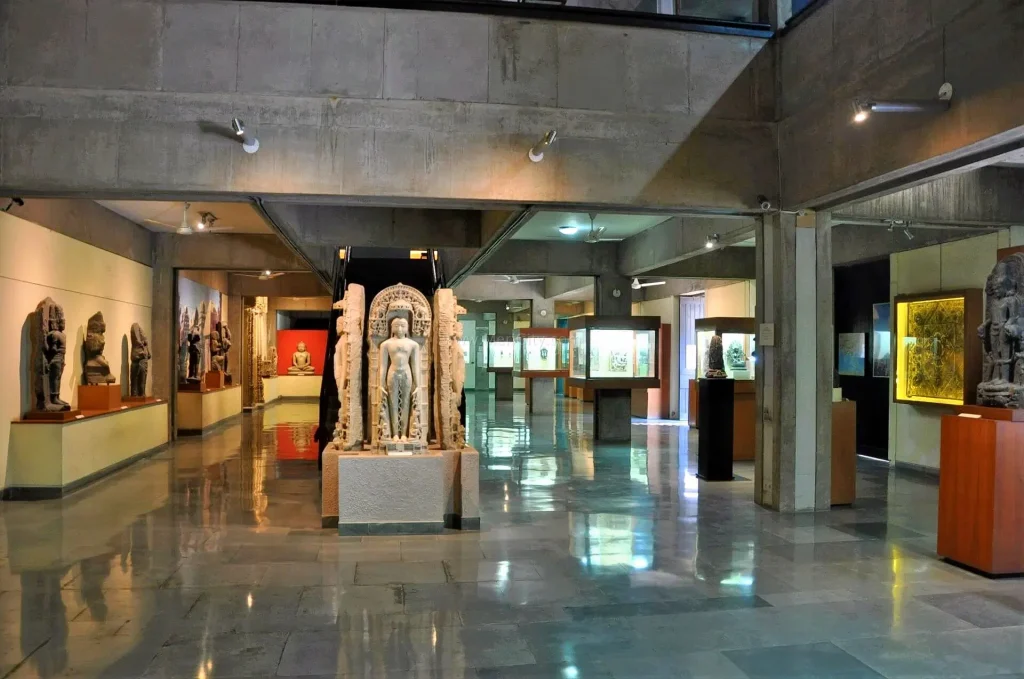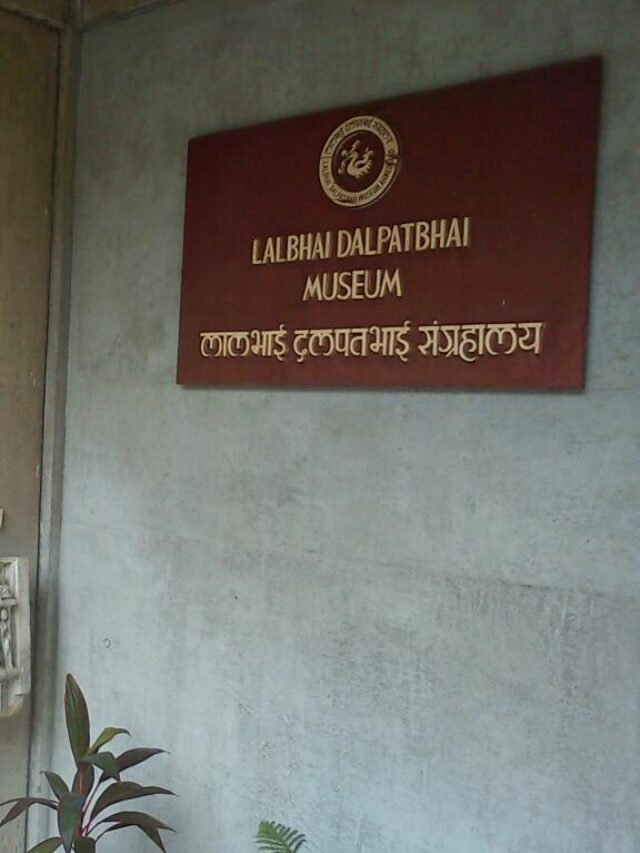Ahmedabad, the cultural heart of Gujarat and India’s first UNESCO World Heritage city, boasts a rich tapestry of heritage and history. Amidst the hustle and bustle of this vibrant city lies a serene sanctuary of art and antiquity – the Lalbhai Dalpatbhai Museum Ahmedabad. Founded in 1984, this museum stands as a testament to the vision of its two founders, Shri Kasturbhai Lalbhai and Muni Punyavijayaji, and their deep-rooted commitment to preserving and showcasing the cultural heritage of India. Whether you’re a history buff, an art enthusiast, or simply a curious visitor, a journey through the hallowed halls of the Lalbhai Dalpatbhai Museum Ahmedabad promises an enriching experience that resonates with the timeless beauty and enduring legacy of India’s cultural heritage.
Lalbhai Dalpatbhai Museum Ahmedabad
The Lalbhai Dalpatbhai Museum Ahmedabad, commonly known as the L.D. Museum was established in 1984 by the Lalbhai Dalpatbhai Trust, with the generous patronage of Shri Kasturbhai Lalbhai. Kasturbhai Lalbhai, a scion of the illustrious Lalbhai family and a prominent industrialist, was not only a visionary entrepreneur but also a passionate art aficionado. His ardour for preserving India’s rich cultural heritage prompted him to establish this museum as a means to foster appreciation for art and history among the public. Earlier, the artefacts were housed within the LD Institute of Technology. As the collection grew, the need for a new and separate museum building arose. Thus, the Lalbhai Dalpatbhai Museum Ahmedabad was engendered, and designed by architect Balkrishna Doshi. Although the museum has been open to the public since 1984, it was formally inaugurated in 1985 by Braj Kumar Nehru, the former governor of Gujarat.
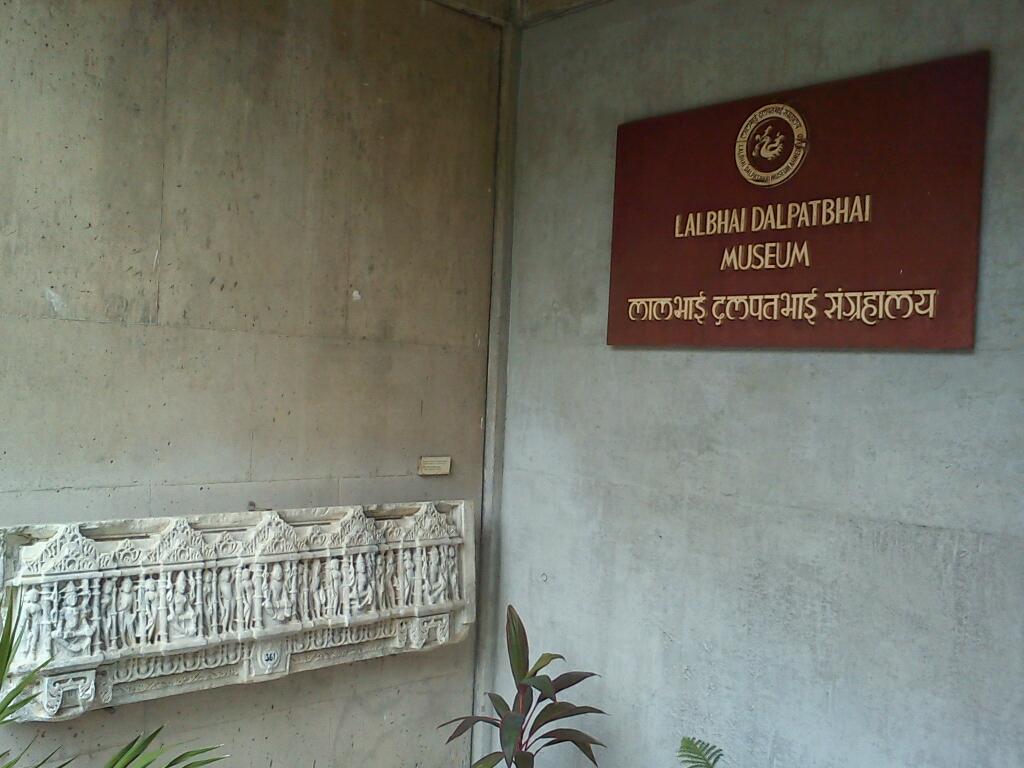
The museum was founded with a multifaceted purpose. Primarily, it aimed to serve as a custodian of India’s diverse cultural heritage, encompassing art, archaeology, and anthropology. Additionally, it sought to provide a platform for scholarly research, education, and cultural exchange. Through its exhibitions, workshops, and outreach programs, the museum endeavours to enrich the cultural landscape of Ahmedabad and beyond.
Collections at Lalbhai Dalpatbhai Museum Ahmedabad
The Lalbhai Dalpatbhai Museum boasts a remarkable collection spanning various epochs of Indian history and artistry. From ancient artefacts to contemporary masterpieces, the museum offers a panoramic view of India’s rich cultural legacy. The museum is open on all days except Mondays and public holidays. Let’s delve into some of the highlights of the esteemed collections.
Sculptures
A striking feature of the museum is its extensive collection of sculptures, ranging from the ancient to the medieval period, which are displayed in the Madhuri D Desai Gallery. Visitors are greeted by the largest head of Buddha from Gandhara; a 6th-century rare figurine of Matrika Indrani from Shamalji; the Jaina bronze sculptures from Ghogha; 18th century Tibetan/Nepali bronze mandala; and more showcasing the evolution of Indian sculptural artistry. The museum’s diverse array of sculptures includes representations of Hindu gods and goddesses, Buddhist stupas, and Jain Tirthankaras, each reflecting the spiritual and aesthetic sensibilities of its era.
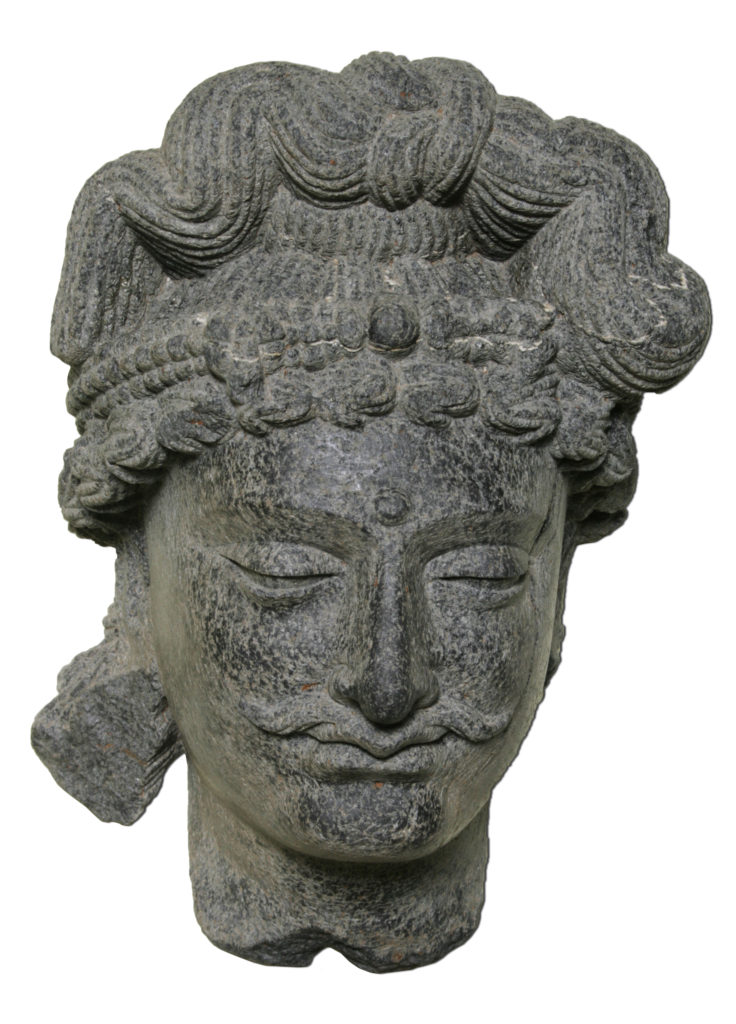
Textiles
A treasure trove for textile enthusiasts, the museum houses a splendid collection of traditional Indian textiles and costumes. From intricate embroideries to vibrant tie-dye techniques, each textile narrates a tale of craftsmanship and cultural heritage. The collection encompasses a wide range of textiles, including sarees, shawls, turbans, and ceremonial garments. At the Muni Punyavijayaji Gallery, you may find the earliest extant example of painting on cloth in the form of the 1433 Jaina pilgrimage painting brought from Champaner.
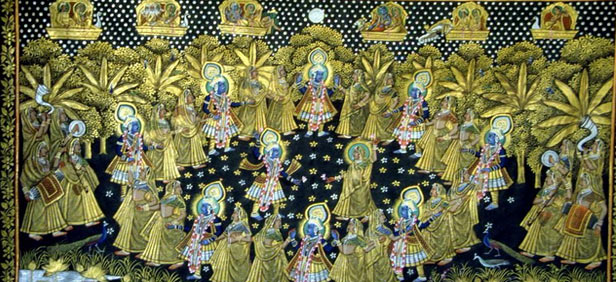
Miniature Paintings
The collection of 1855 drawings and unfinished paintings is another USP of Lalbhai Dalpatbhai Museum Ahmedabad. Composed primarily of miniature paintings, they exhibit the exquisite artistry and meticulous craftsmanship of Indian artists from different schools between the 17th and 19th centuries. Dating back to the Mughal, Rajput, and Pahari schools of painting, these miniatures encapsulate themes of love, mythology, and courtly life. Adorned with intricate details and vibrant colours, these miniature marvels transport viewers to a bygone era of artistic splendour and cultural refinement.
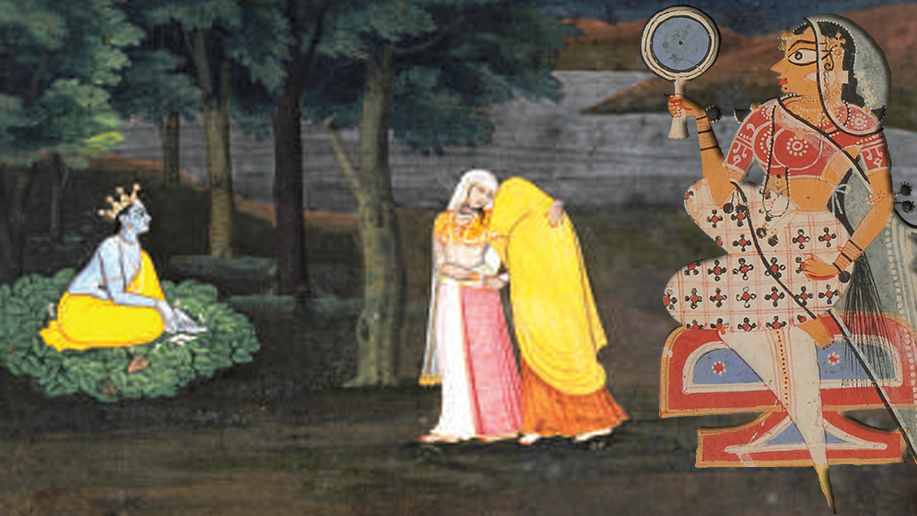
Coins and Seals
For numismatists and history enthusiasts, Priyakant T. Munshaw Gallery of Coinage collection of coins and seals offers a fascinating glimpse into India’s economic and political history. The collection includes coins issued by ancient Indian dynasties, medieval rulers, and colonial powers. On display are the 600 BC punched-marked coins called ‘bentbar;’ Akbar’s Din-i-Ilahi coin, Jahangir’s Zodiac series in silver, Adil Shah’s 1668 ‘Larin’ and contemporary currency.
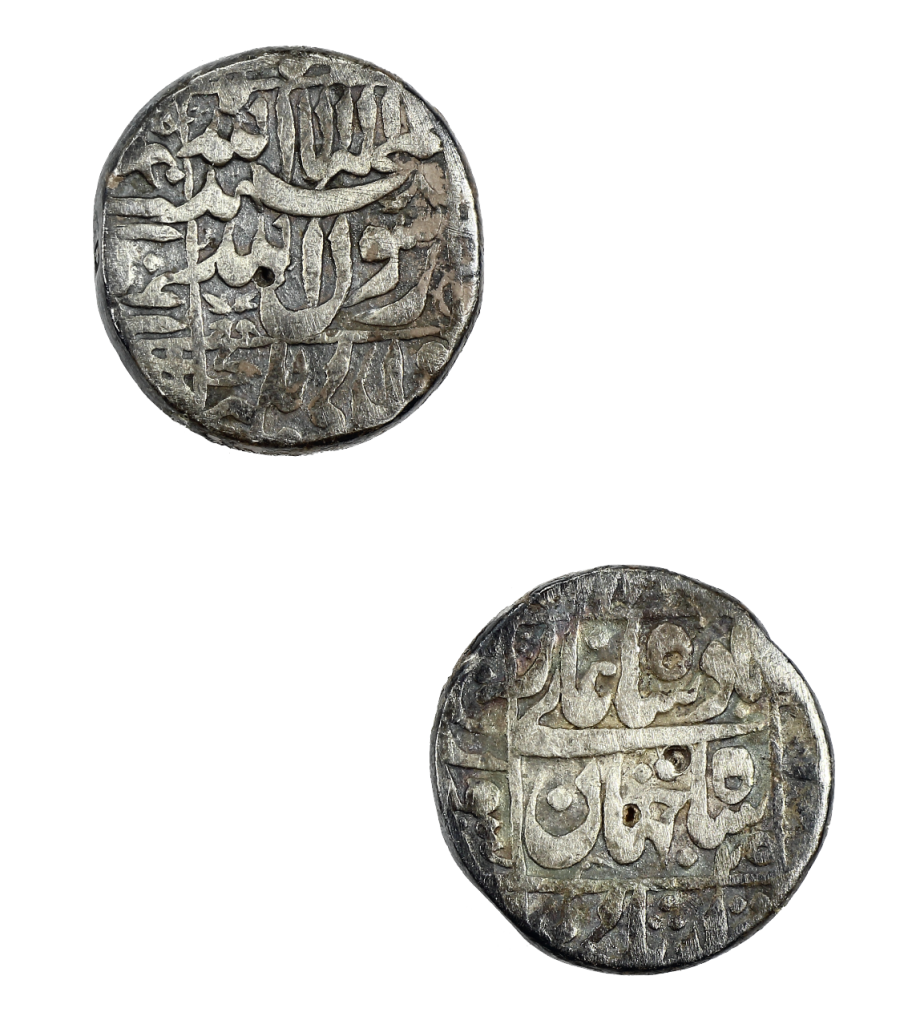
Wood Work
At the Leelavati Lalbhai Woodwork Collection, you will find intricately carved woodwork spanning centuries. Visitors can marvel at exquisite examples of regional styles and cultural motifs prevalent across India. For example, you may witness the rare illustrated wooden book covers called ‘patli’ for palm-leaf manuscripts. The ‘Jaina Derasara’, relief panels of Tirthankaras and other symbolic forms, carved pillars and decorative panels are also attention-grabbing. The Asian artistry is also represented at the Lalbhai Dalpatbhai Museum Ahmedabad in the form of Chinese/Japanese style decorated wooden cupboards.
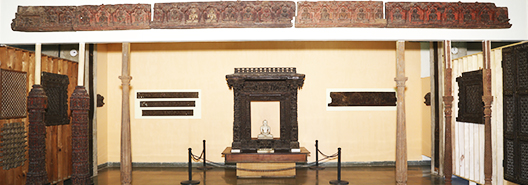
Bead Work
The Gopi-Anand Beadwork Collection at the museum chronicles the art of ‘Moti Guthana’ or ‘Moti Poravanu’ which was predominantly practised in the Saurashtra and Kutch regions. Although the art form has been practised for centuries, it became widespread in the 19th century. The beadwork collection depicts the excellence of Gujarati handicrafts, which are often employed in marriage ceremonies and as household decorations.
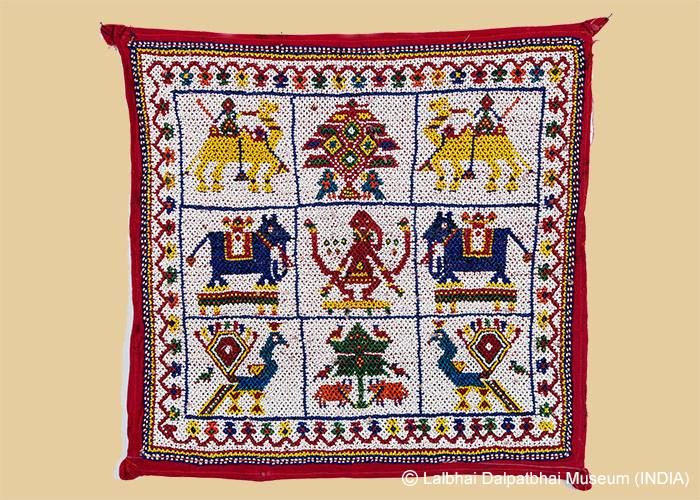
Image Courtesy – Thrillophilia
Take A Heritage Walk Through These 7 Museums and Art Galleries in Ahmedabad

